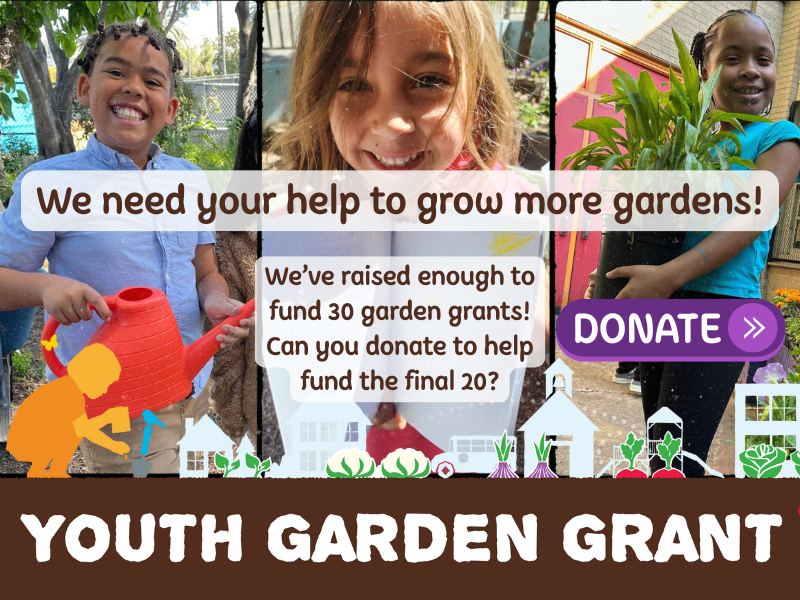The Benefits of Urban Gardening
Here are a few reasons to try urban gardening:
- Grow your own fresh fruits and vegetables. You may not be able to feed your family or class with a small-space urban garden, but you can harvest a surprising amount of food to supplement supermarket fare. By growing food organically, you can ensure it's free of synthetic pesticide residues.
- Teach kids about food origins. From something as simple as pulling carrots from container gardens, kids get to see first-hand how food grows, the process it involves, and how weather and other factors influence the harvest. They gain an appreciation for the food they purchase and the human effort it took to provide it. And kids who grow vegetables are more likely to eat them!
- Foster community. When folks of all ages are out tending their gardens, they interact, share stories, offer tips, and create common ground for connection.
- Connect with your environment. Gardens demonstrate the interdependence of plants and animals in the natural world — bees pollinating flowers so that they produce fruits, or birds plucking seeds from mature sunflowers. These simple sights help us humans cultivate a sense of belonging to nature — a sense that can be missing in densely populated areas with limited green space.
- Provide habitat for wildlife. Urban plantings can provide food and habitat for insects, birds, and other creatures — both year-round residents and migrating populations, such as monarch butterflies.
- Improve urban environmental conditions. Gardens, green spaces, and trees mitigate the "heat island effect." Buildings, concrete, and pavement absorb and retain heat, causing increased temperatures both day and night. Greenery, on the other hand, has a cooling effect. Gardens also have the potential to help with stormwater runoff and air quality.
Urban Gardening Techniques
Don't have room for a big, in-ground garden? Here are some small space growing ideas.
Containers
You can place a container garden nearly anywhere — a front stoop, along the edge of a driveway or walkway, even on a rooftop! Small containers are ideal for small crops like lettuce and herbs, while tomatoes prefer larger pots that hold up to 5 gallons. You can purchase pots or make your own — just be sure there are holes in the bottom to allow excess water to drain. Most plants prefer full sun, though in hot regions a little midday shade can prevent plants from drying out too quickly. If your containers are small and lightweight, you can move them to sunny spots throughout the day, or even to a protected spot if a cold snap threatens. Learn more at Container Gardening for Kids.

Vertical Gardens
When horizontal space is limited, look up!
Hanging baskets can be planted with flowers, herbs, small vegetables — there are even compact tomato varieties developed for growing in hanging pots! Remember that most plants need at least a half-day of full sun, so you'll need to find a way to hang the pots where they'll get the most sun. A pole or sturdy "shepherd's hook" (such as those used to hold bird feeders) are good choices.
Growing plants on trellises and other supports allows you to have more plants in small spaces. You can even put supports in a planter for vines to climb! Make homemade trellises with sticks or bamboo and twine.

Get creative with wall-mounted planters. You can purchase wall units, or make a fun and simple wall garden using a shoe organizer! Read about Pocket Planters.
Create an entire green wall! Check out Southfield School's huge wall garden made from 528 milk cartons and planted with herbs, fruits, and vegetables. (The school, located in Shreveport, Louisiana, is a 2019 Carton 2 Garden grand prize winner.) Watch their video.
Indoor Gardens
With access to a sunny window or help from grow lights, indoor spaces can be transformed into lush gardens. Check out our Indoor Gardening Basics article for garden system options and tips.
Hydroponics
The term hydroponics refers to ways of growing plants without soil. Instead, the plant nutrients are dissolved in water, and that nutrient solution is delivered to plant roots in various ways. Hydroponic units allow you to grow lots of plants in small spaces. You can purchase a hydroponic unit or make one yourself: DIY Hydroponics



